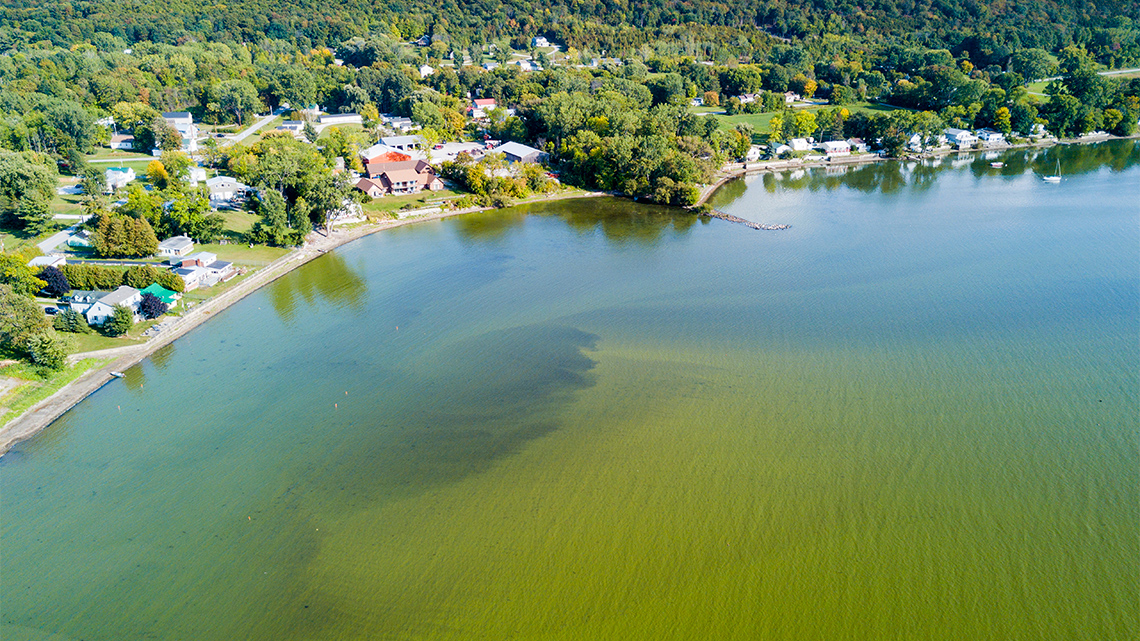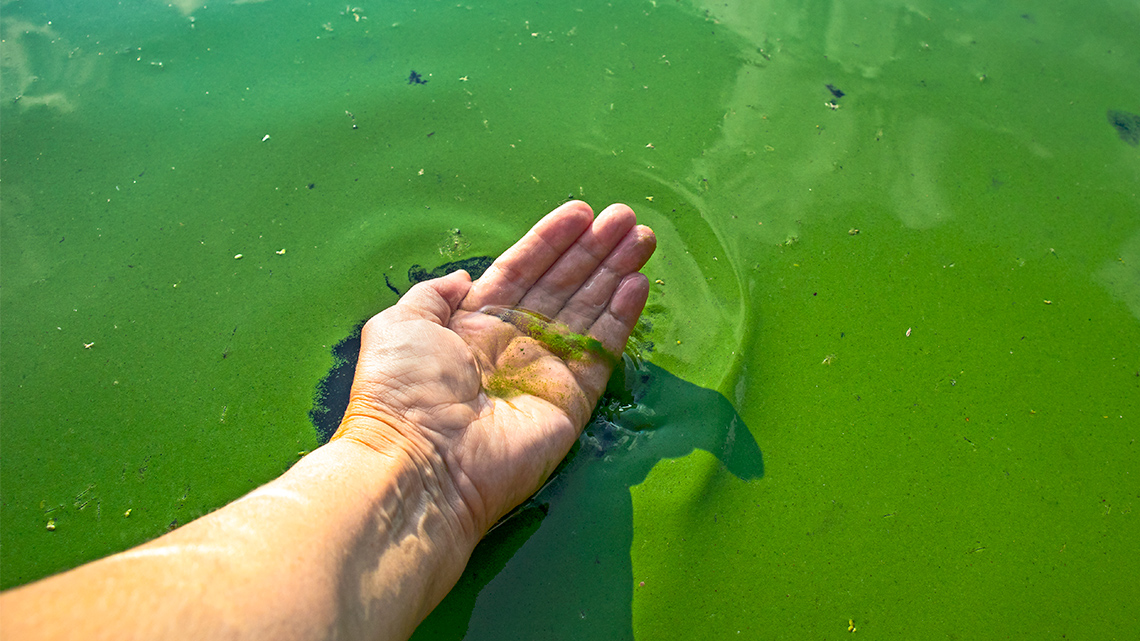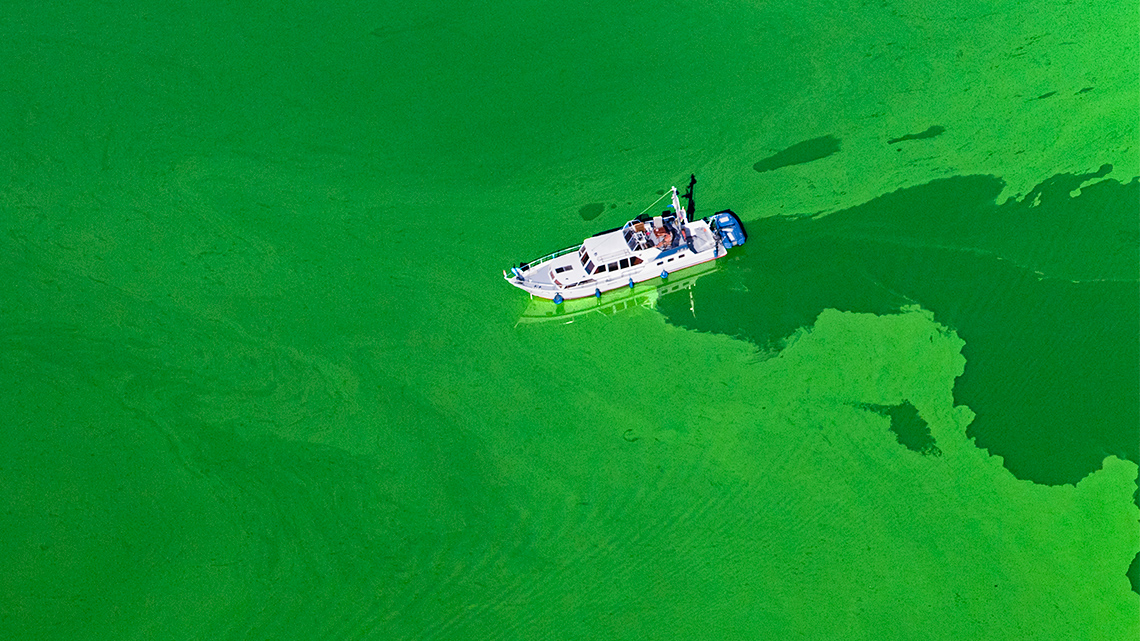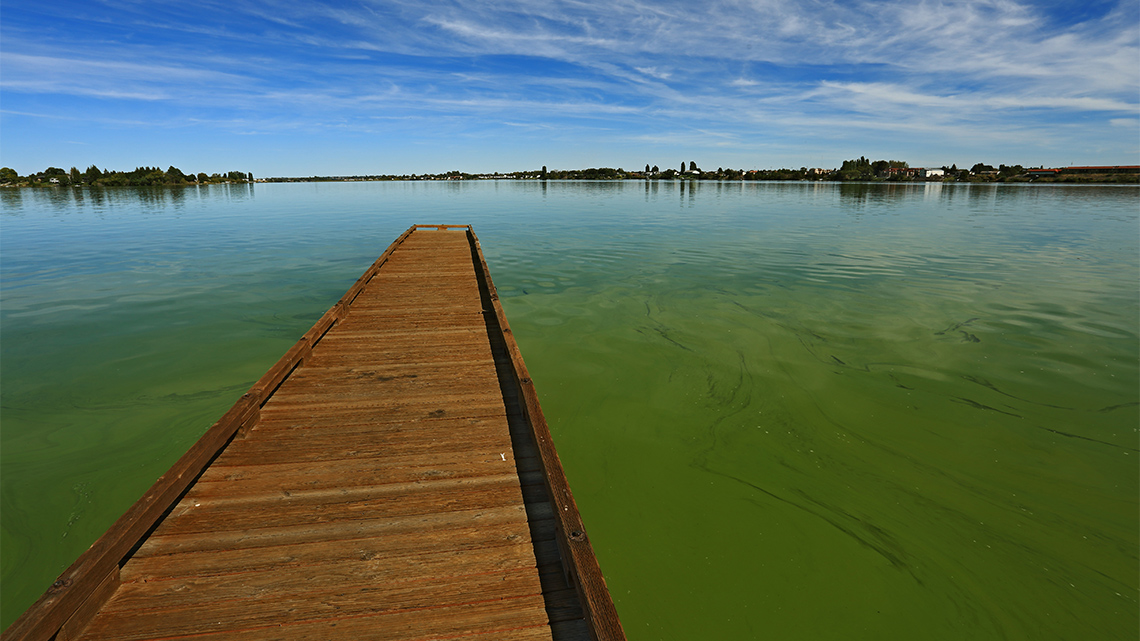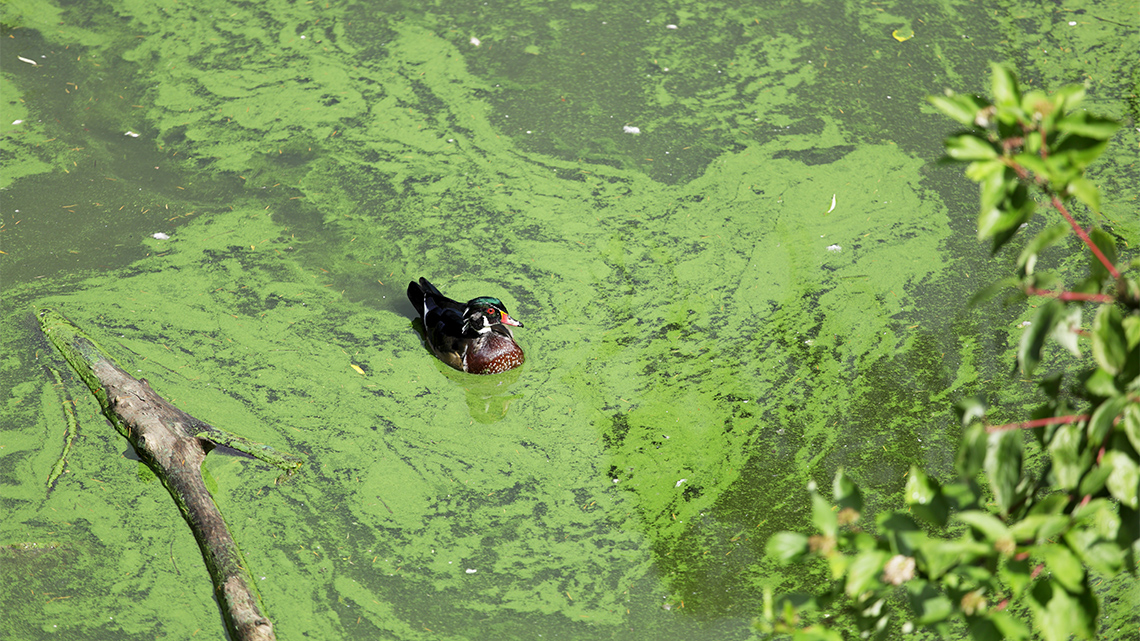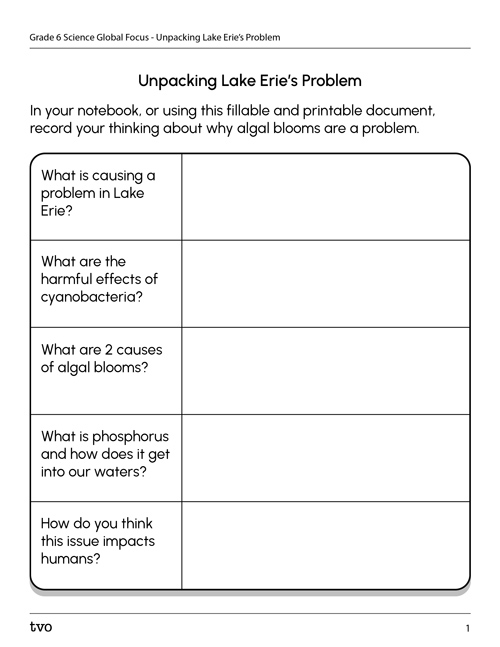Minds On
Examining our lakes and waterways
The health of our lakes and waterways is essential to so many plants and animals that live in and around them. People too depend on these waters different reasons but particularly for drinking water.
Examine the following images. As you do, record your answers, using a method of your choice, to these questions: What do you notice? What do you wonder?
Brainstorm
Brainstorm
- What clues did the images give you to the health of many of our lakes around the world?
- Why do you think we should care about this and how do you think it might connect to climate change? If possible, share your thoughts with a partner or record them using a method of your choice.
Action
Global connection

The United Nations (UN) is a group of many countries from around the world that have come together to create a better future for people and the environment. They have created 17 goals called the Sustainable Development Goals.
This learning activity is connected to Goal #13: Climate Action. This means everyone should help reduce climate change and its impact. Storms, disasters, and lack of food and water are made worse by climate change.
What is algae?
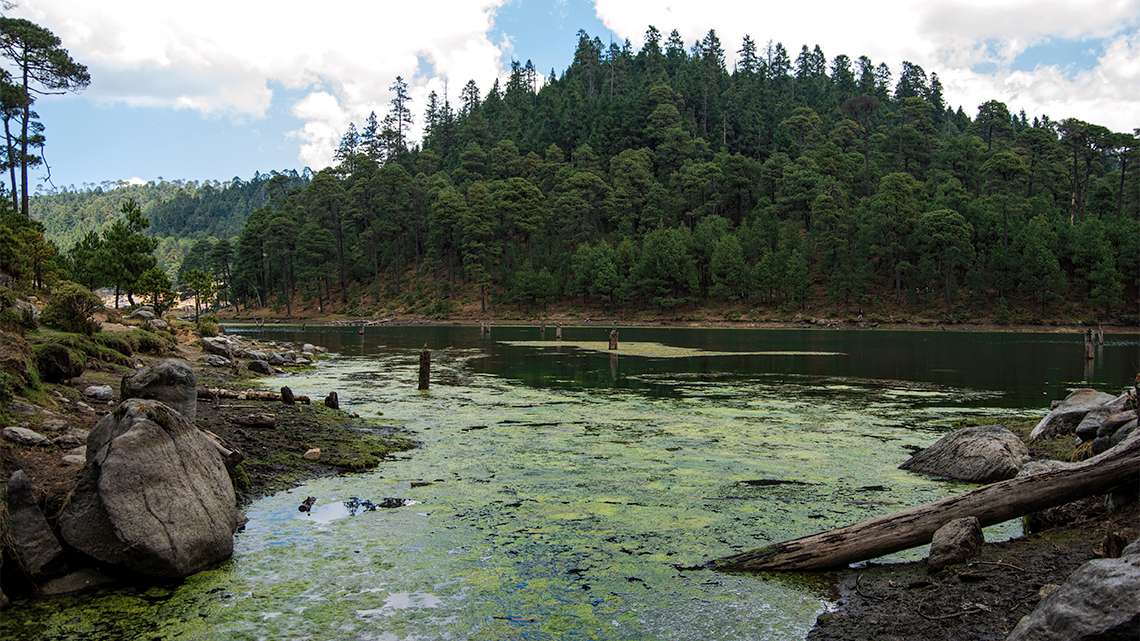
If you’ve had the opportunity to visit or spend any time near a lake, pond, or marsh, have you ever noticed a layer of green slimy film on the surface? Has it had a gross smell to it? Well, that green layer is very likely to be a plant-like aquatic organism called algae, and that smell is very likely caused by a microorganism called cyanobacteria, which was once more commonly called blue-green algae (even though it’s not actually algae!).
While algae and cyanobacteria are a natural part of our water ecosystems, our changing climate and human use of chemicals and fertilizers have led to a big problem: algal blooms.
Algal blooms are when naturally occurring algae and/or cyanobacteria reproduce at a very rapid rate and form “blankets” of green scum on the surface of waters.
Let’s examine the following video entitled “What Causes Algae Blooms?” to learn more about blue-green algae in Lake Erie and gain clues as to why algal blooms are a problem and why we should care.
In your notebook, or using the provided organizer, record your thinking about why algal blooms are a problem.
Complete Unpacking Lake Erie’s Problem in your notebook or using the following fillable and printable document. If you would like, you can use speech-to-text or audio recording tools to record your thoughts.
Many people mistakenly think that blue-green algae is an invasive species because of the major threat to marine and wildlife that their algal blooms pose, and because they seem to have only become a significant problem in the last several decades. They are not an invasive species because they are a natural part of aquatic ecosystems. Invasive species are those that are not native to an environment but are introduced through human activity, and then threaten the survival of native organisms.
Let’s examine another video entitled “Ontario Hubs: Lake Erie’s Toxic Problem” to gain more of an understanding of blue-green algae and begin to explore some possible solutions. As you examine the video, consider adding more detail to your organizer “Unpacking Lake Erie’s Problem”.
Check your understanding
Check your understanding of our investigation into this problem thus far by completing the following activity.
Select whether the statement is true or false, then press ‘Check Answer’ to see how you did.
Climate change and algal blooms
While algae and cyanobacteria have been a natural part of aquatic environments for centuries, their concerning blooms have been a problem in much more recent times as more and more lakes in Canada and in the rest of the world are reporting algal blooms. This is largely due to climate change.
Press the following tabs to access some of the effects of our faster than usual changing climate and how these effects are directly related to the problem of algal blooms.
The planet’s temperature is rising at a rate that is much faster than has been ever recorded in history. Global atmospheric temperature rises that normally happen over thousands and thousands of years are now increasing over only hundreds of years. Global bodies of water, such as our oceans and lakes, are absorbing the majority of this extra heat which is causing major changes in the natural balance of these ecosystems.
Warmer lake temperatures mean microorganisms like algae and cyanobacteria which rely on the sun to exist, thrive and multiply at a much faster than usual rate. This rapid multiplication results in what we call algal blooms which form thick layers on the surfaces of our waters.
These thick algal blooms, not only block sunlight from reaching the other organisms that live under the surface of the water, but they also use up oxygen found in the water when they’re at the end of their lifecycle. Oxygen is essential for fish, aquatic plants and other organisms that live in lakes. Without it, they all die and the lake’s ecosystem is destroyed. Cyanobacteria also release toxins at the end of their lifecycle, which is incredibly harmful to any animals that drink the lake water causing sickness and death that disrupts the food web of land animals that live near lakes.
Cyanobacteria not only need sun and warmer temperatures to cause their problematic blooms, but they also need nutrients like the mineral phosphorus. Phosphorus is typically found in sewage, road salt, fertilizers and even in some detergents. While many local governments and communities have put phosphorus bans and clean-up methods into place, there is still a lot of this mineral stored in our soils. With more severe storms as a result of our faster than usual changing climate, there is a lot more run-off from our soils entering our lakes and water systems increasing the phosphorus levels significantly. Severe storms also turn up the lake bottoms much more than usual which is another source of buried phosphorus.
Brainstorm
What do algal blooms mean for biodiversity?
Biodiversity refers to the variety of different forms of life on Earth. Billions of different organisms exist, and each play a critical role in the balance of life on our planet.
How do algal blooms impact biodiversity in lake ecosystems? What impact does this have on habitats, food webs and ultimately humans? Consider how this issue might impact the following:
- animals and organisms that live in or around the lake
- communities that are near the lake
- tourism and businesses that depend on the lake
- the fishing industry
- farms that may use the lake as a water source
Record your thinking using a method of your choice. If possible, share your ideas with a partner.
Spotlight on innovative technology
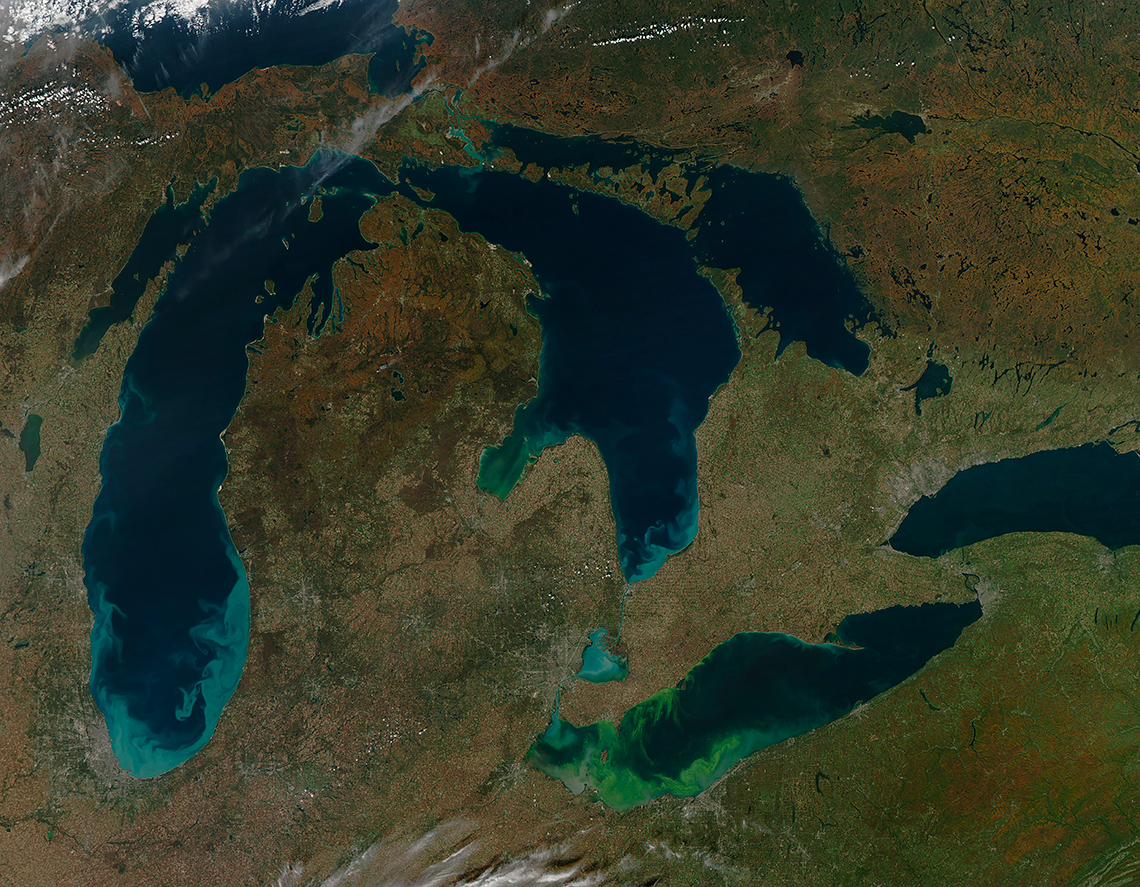
To better understand and predict where blooms are occurring, scientists at NASA and beyond are measuring the algal blooms in global waters, and are using data from a space satellite to do it!
Explore the following video clip entitled “Landsat Helps Warn of Algae in Lakes, Rivers”, which describes emerging technology and how satellites are being used for measuring and predicting algal blooms.
The Landsat satellite technology measures the blue-green colour of cyanobacteria by analysing the amount of light in visible and infrared wavelengths. How cool is that?!
What is being done to solve the problem?
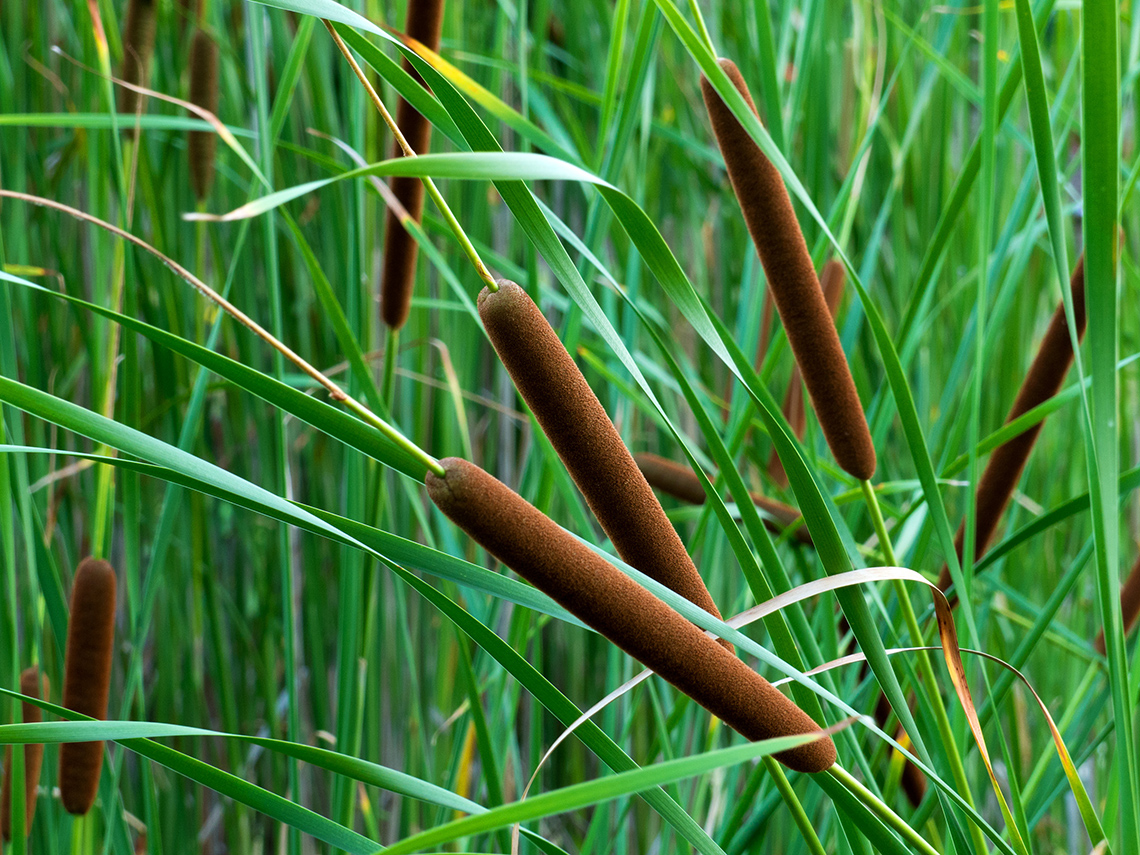
Lake Winnipeg in Manitoba is another body of water that has harmful algal blooms that reoccur each year. In one study, scientists have found that cattails, a wetland, tall grass-like plant, can absorb phosphorous and could even be harvested as a way to recycle phosphorous.
Access the following video clip from “The Nature of Things: Save My Lake”, where David Suzuki, a Canadian environmental activist, discusses the various reasons behind the algal blooms of Lake Winnipeg and some possible solutions to restore the lake’s once healthy ecosystem. As you examine the video, take note of the solutions being discussed using a method of your choice.
Press ‘Hint’ to access a summary of some of the solutions presented in the video.
Some possible solutions to reducing algal blooms:
- injecting phosphorus-rich natural fertilizers, such as pig manure from hog farms, deeper into the soil of crop fields so that they nourish the soil but are less likely to be part of runoff into lakes and bodies of water
- slowing the nutrient runoff that ends up lakes by creating dams and tiny marshes with native plants that trap the runoff before it enters the water
- capturing the phosphorus using native cattail plants that can be recycled as fertilizer for the farms
- creating small marshes with many native grasses and plants to slow and filter waste and sewage waters before they reach the lakes
Scientists, environmentalists, and farmers alike are realizing that many of the solutions to issues like climate change or potentially harmful organisms like blue-green algal blooms, lie in protecting and sustaining our planet’s biodiversity. Looking to the natural interconnectedness of living things can provide valuable information to counteract much of the loss and devastation on our planet.
Consolidation
Time to act
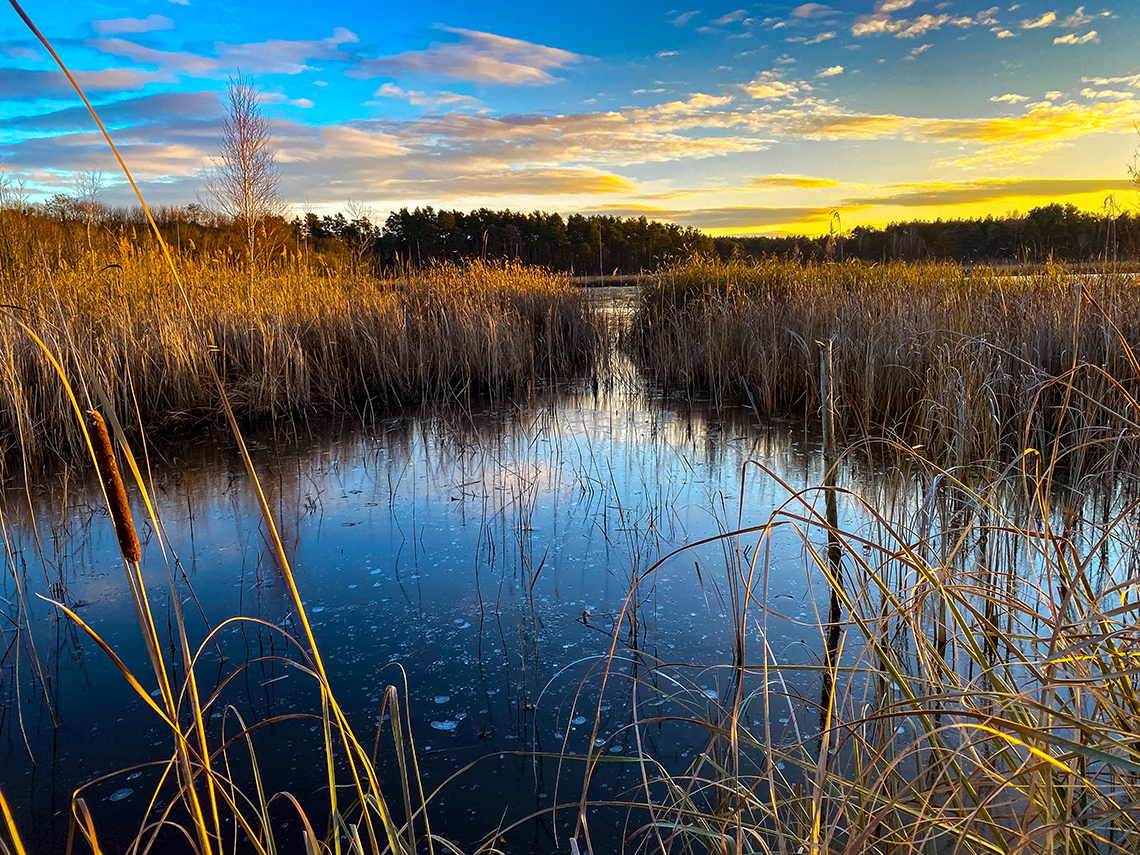
Has blue-green algae been a problem in your area or community? Even if it hasn’t, it’s possible that it could in the future.
Be an environmental advocate in your community. Create a poster campaign, a podcast or a public service announcement (PSA) to educate members of your community on the problem and risks of cyanobacteria in your waterways.
In your campaign make sure to include the following:
- an explanation of what blue-green algae/cyanobacteria is
- why it’s a problem that your community should care about
- what individuals can do to help stop or slow these harmful algal blooms from occurring
Consider using the following checklist to assess your plan and if you’ve included all the important information.
Self-assessment checklist
My work includes:
Once you have created your action plan to educate, think about how you could go about actively sharing it with the members of your community. Review your plan with a trusted adult before you begin sharing it with your community.
Reflection
As you read through these descriptions, which sentence best describes how you are feeling about your understanding of this learning activity? Press the button that is beside this sentence.
I feel…
Now, record your ideas using a voice recorder, speech-to-text, or writing tool.
